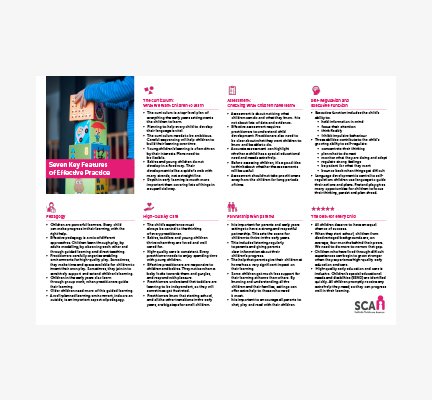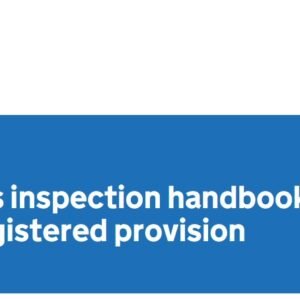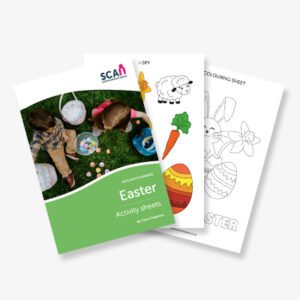Seven Key Features of Effective Practice
£1.00
The Seven Key Features of Effective Practice provide a framework for high-quality early years education. These features include a child-centred approach, clear learning goals, and well-planned activities. Effective practice promotes positive relationships between children and educators. It encourages purposeful play, both adult-led and child-led. Practitioners must ensure inclusivity, recognising and supporting individual needs. Regular observation and assessment help track children’s progress. Professional development ensures educators stay up-to-date with best practices. The Seven Key Features of Effective Practice align with the Early Years Foundation Stage (EYFS) and help create a nurturing, supportive learning environment for all children.
Understanding the Seven Key Features of Effective Practice
The Seven Key Features of Effective Practice guide practitioners in delivering high-quality early years education and care.
These features help shape settings where every child feels valued, supported, and encouraged to thrive in their development.
Early years practitioners must understand each feature. Together, they create a strong foundation for learning, care, and professional growth.
1. The Best for Every Child
Practitioners support each child’s progress regardless of background or ability. High expectations ensure all children feel respected and included.
2. High-Quality Care
Warm, consistent relationships build security and trust. Children feel confident exploring their world with support from attentive adults.
3. The Curriculum: What We Want Children to Learn
Practitioners plan experiences that meet developmental needs. The curriculum builds on each child’s interests and unique learning journey.
4. Pedagogy: Helping Children to Learn
Effective teaching balances adult-led and child-led play. Practitioners model, guide, question, and extend learning through meaningful interactions.
5. Assessment: Checking What Children Have Learnt
Ongoing observations support informed planning. Practitioners assess learning accurately through daily interactions and thoughtful reflection.
6. Self-Regulation and Executive Function
Children develop focus, resilience, and emotional control. Practitioners support this through modelling, routines, and consistent expectations.
7. Partnership with Parents
Strong relationships with parents improve outcomes. Practitioners share information and respect each family’s knowledge and contributions.
Why the Seven Key Features Matter
These features work together. They ensure children receive responsive, inclusive, and well-planned care throughout their early years.
They also help practitioners reflect and improve. Regular evaluation strengthens both individual practice and the wider setting.
What to Look Out For
Watch how practitioners engage children. Effective practice includes active listening, encouragement, and consistent support during play and learning.
Also, check how settings communicate with families. Strong partnerships help extend learning beyond the classroom.
Conclusion
The Seven Key Features of Effective Practice offer a reliable framework for early years settings. They ensure children feel supported, valued, and ready to grow.
When followed with intention, these features help create exceptional learning environments where every child can thrive.






